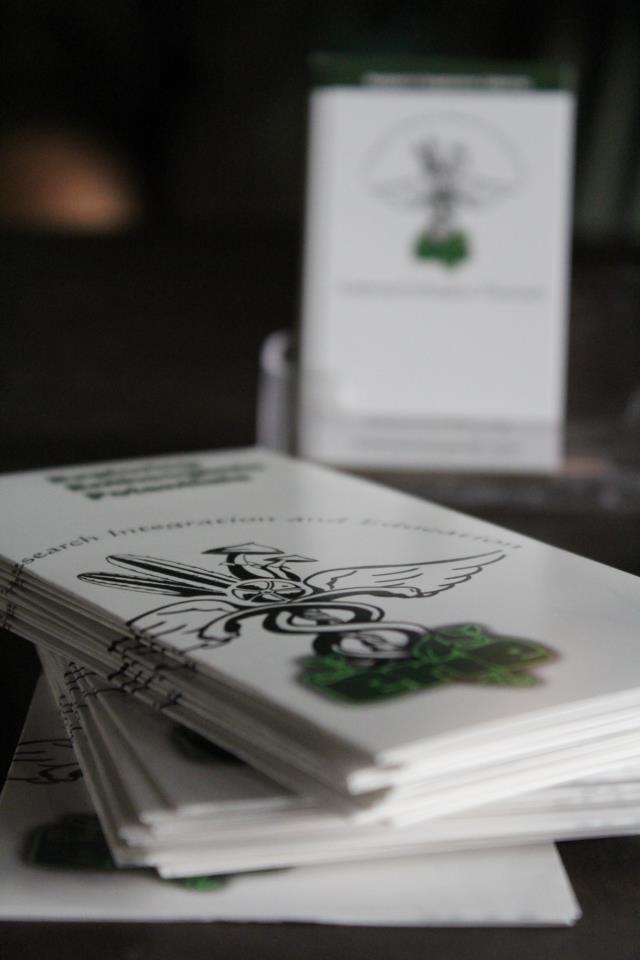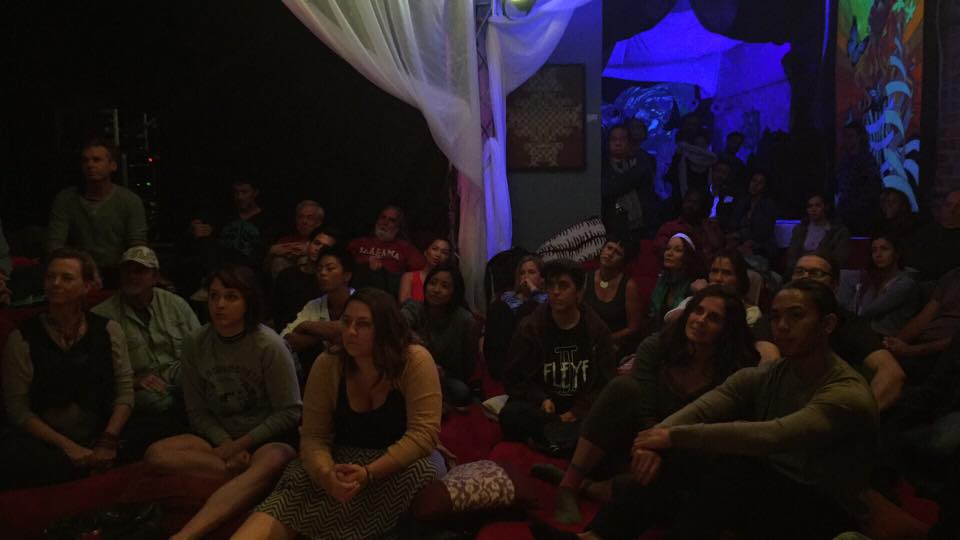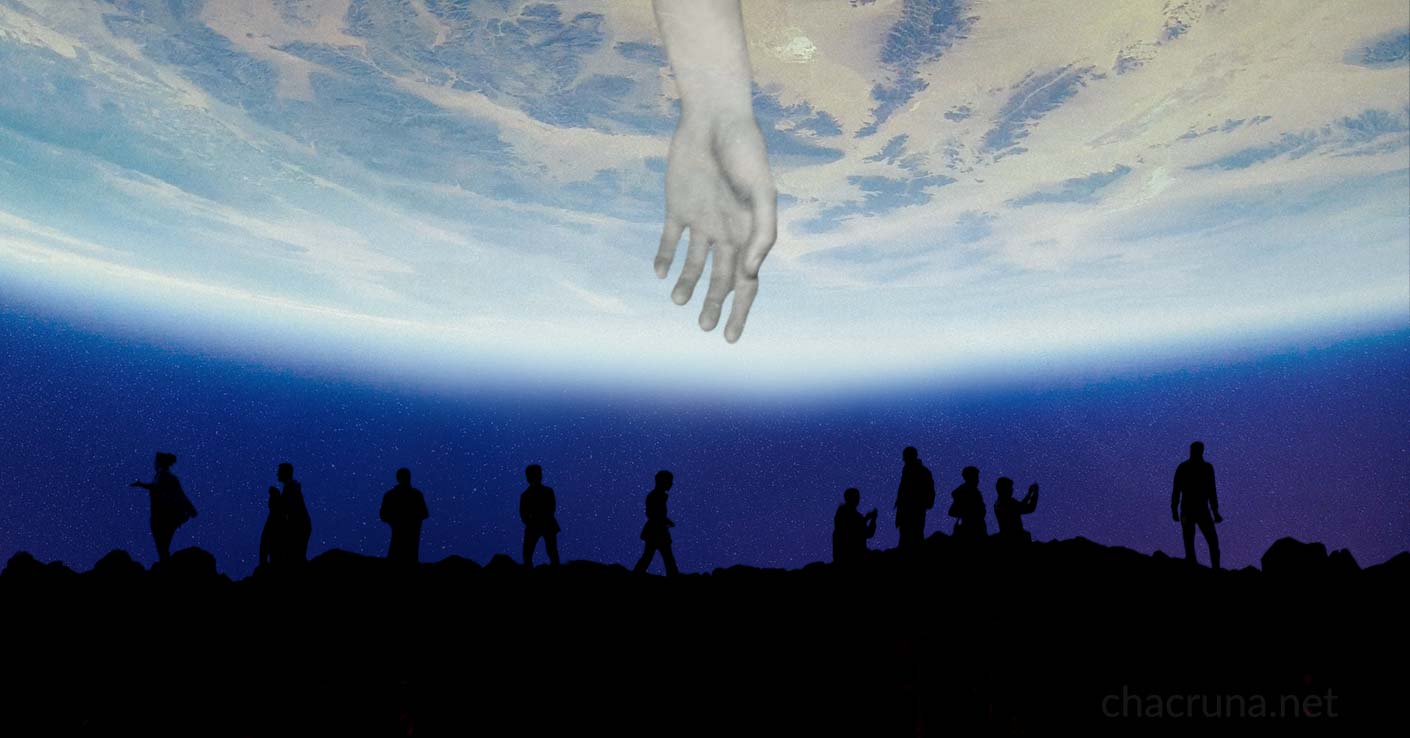- Why a Culture of Integration is Critical For the Modern Psychedelic Movement - September 27, 2017
- How to Safely Access Psychiatric Support in Times of Psychedelic Crisis - December 17, 2018
- Why a Culture of Integration is Critical For the Modern Psychedelic Movement - September 27, 2017
The continued fragmentation of modern Western culture is driving us towards social isolation. However, humans are emotional beings; we learn through relationship. Without relationship we are stuck, unable to grow or evolve, much less survive. We live in a society that glorifies independence, when in reality, we are in greatest harmony when we are interdependent. For each of us co-authoring this article, entheogens and psychedelics have evoked a deep understanding of how critical community is when going through a psychospiritual process of transformation.
Within entheogenic community, we are able to surrender to the metamorphosis that takes place when a strongly held worldview is shattered. Community brings us humor and hope when we feel the return from dismemberment is impossible. This is why we strive through the non-profit Entheogenic Research, Integration, and Education (ERIE) to create a culture around “integration,” the process by which the material accessed and insights gained in an entheogenic experience are incorporated, over time, into one’s life in a way that benefits the individual and their community; a culture that prioritizes the collective, respects the sacred and mystical, and in addition, weaves in a practical application of the transpersonal into the modern context we live in.
Incorporating integration that is appropriate to our modern context is critical. One of the main reasons that “integration” is not a prominent concept in more traditional entheogenic cultures is that integration is an inherent part of them already. The community is naturally involved in mentoring and discussing entheogenic realms; it is spoken about openly, and the practicing shaman lives locally. Integration is part of everyday life. Unfortunately, the majority of us don’t live in places surrounded by such openness to entheogenic exploration; thus, a significant part of our integration is making sure the insights we gain can be applied to modern life.
So, what key aspects of a culture of entheogenic integration—inherent, traditional, or modern—are so important? A culture of entheogenic integration values and validates the entheogenic experience without the judgment or stigma that much of the Western world does. A key component to integration is a community that is compassionate and encouraging of inner personal work. A supportive safety net is established when we are surrounded by loved ones who are there to witness our personal journey and offer reflections along the way. They bring depth to our understanding, offer helpful perspectives, and provide feedback at the times we may go astray. Altogether, our friends, family, teachers, and elders hold us accountable to actualize insights so that we may live the full potential of personal transformation accessed by psychedelic and plant medicines. The wisdom from an elder can provide just the right resource when we struggle with a piece of shadow we faced in a journey. A hug from friends and family carries us when we continue to release grief cracked open. The right teacher helps us discern where and when we use entheogens; if it is the right time, and if it is in a safe container.

It is also important to remember that we live as part of a greater social ecology. As much as we invest in others and ourselves, others invest in us, and we all benefit. When we transform as individuals, there is a ripple of transformation outward. Everyone in relationship to us has the opportunity for change; thus, the whole community gets stronger. Community is a co-creation; the better we take care of ourselves, the better we take care of each other, and the better we take care of our environment. The stronger the symbiosis between us, societies, Mother Earth, and beyond, the greater the resilience we can hold in the face hardship.
Greater social cohesion and healthier relationships are examples of how modern society and the current psychedelic movement could benefit from a culture of entheogenic integration. Below is a list of 5 additional components to consider.
Beyond Research Trials and Visiting Underground Healers: Providing Resources for Participants
Psychedelic Science is booming, providing empirical evidence to support centuries of anecdotal research. As the potential benefits of psychedelic research have emerged in mainstream media articles, so has a growing interest in underground ceremonies. Long-term integration is outside of the scope, and financial availability, of the privately-funded psychedelic studies. Travelling healers who bring this work to the underground also do not have the time and energy available to engage with integration processes. There is no doubt that entheogens are potent; studies at Johns Hopkins show that experiences with them are often some of the most profound and important experiences of one’s life. The research session, or ceremony, is only the beginning of the work to come. For transformative experiences to actualize, each individual must follow up and dedicate themselves to practices aimed at personal growth and continued exploration of their newly-inspired wonder. A supportive community is critical to offer guidance and frameworks of accountability for the integration process. This comes in the form of family, peers, friends, elders, and integration consultants. The reemergence of the psychedelic movement has sparked the need for integration, and a niche of professionals are gathering to assist individuals requiring short and long term integration. You can find a list of California-based ERIE integration consultants here.
Beyond Productivity: Who’s Going to Have a Job When Everything is Automated?
The paradox of technology is that it improves the quality of independent life, but it also has the potential to be our greatest competitor. As we zoom into the age of automation, artificial intelligence will be like that overambitious and efficient coworker setting an unattainable standard of success. With capitalism as the predominant economic system, the drive towards efficiency preoccupies the greater population. This has lead to the development of neurohacking technology, including the growing popularity of LSD microdosing. Microdosing certainly has benefits; however, the current media trend to package it as a productivity enhancer misses the point of what makes these substances unique. Our modern culture is already driving towards unsustainable expectations of human performance, leaving many of us physically, emotionally, and spiritually exhausted. Do we need to include psychedelics in this conversation?
This begs the question: Is productivity the goal or the byproduct of the psychedelic experience? Is there something to be said for the value of wonder and awe to inspire and motivate new ideas and possibilities? The full potential of entheogenic experiences suggests a profoundly different and more holistic world beyond the context of unsustainable production and growth. By encouraging a culture of entheogenic integration, we can engage the motivating aspects of the inner experience and allow them to have value within their unique context. James Fadiman’s early research suggests psychedelic visionary insights provide answers to questions that seem impossible, sparking new trains of thought. The concerns of the future world require these epiphanies and profound insights to succeed and break out of the unsustainable aspects of the current system. They do not cry out for a more productive capitalist cog in the machine.

Beyond Spiritual Materialism: What’s the Value in Losing Your Insights?
It’s a common misconception that the psychospiritual growth associated with entheogens only comes from the experience itself: however, the impact of entheogens is beyond temporary “ah ha” moments, or actions on neurochemical pathways. Implementing these experiences and associated insights is a dedicated path and lifestyle. Commonly, individuals will jump from peak experience to peak experience, oversaturating their minds and bodies, without putting effort to truly actualize their lessons, creative inspirations, or look at their unresolved emotions. This spiritual materialism may hinder growth by not allowing adequate time and space for psychospiritual development.
Navigating through personal experience, and making plenty of mistakes along the way, we have learned that the more we engage with our integration assignments, the more fruitful our next entheogenic experiences will be. Although repeated content around core lessons is common within psychedelic and entheogenic experiences, revisiting the same content relentlessly due to poor integration work can be tedious and counterproductive. A culture of entheogenic integration provides a compassionate container to ground and fully unpack our experiences, thus tilling the ground of being and planting seeds for the next journey into the extraordinary.
Beyond Reductionism: From Quantitative to Qualitative
Embedded in a positivist empirical framework, the contemporary acceptance of psychedelics is emerging through the lens of clinical research and neuroscientific studies. This research has played a significant role in the psychedelic resurgence, opening a path through the veil of stigma; however, it has also begun to operationalize and measure the experience within the reductionist model of science. Current neuropsychology locates consciousness inside the brain; a bizarre interaction of neurotransmitters accidentally producing the byproduct of awareness. This model offers little insight into the phenomenology of the experiences, and avoids transpersonal, archetypal, or humanist approaches.
After five years of offering integration services, we have yet to encounter anyone talking about their neurochemistry during integration. The inner visions they share, the insights, the embodied transformations, have a much more rich and elaborate narrative. Carl Jung refers to these narratives as archetypes of transformation; the experience itself has transformative potential despite the neurochemistry involved. A culture of entheogenic integration provides an opportunity for meaning-making, storytelling, and reflection, building a relationship with the experience that is absent from the neuropsychological framework. The mysterious nature of entheogenic experiences suggests that consciousness is much more complicated than its individual parts, and perhaps humanity as a whole would benefit from looking at the bigger picture.
Beyond the Patriarchy: It Takes a Village
Entheogens also offer insights into new ways of being in community and relationship, helping people become advocates for social systems beyond the paradigm of patriarchy. Slowly, this structure is being dismantled and, through entheogenic insights, we have the opportunity to help design more fluid, gentler, and balanced ways of living. A culture of entheogenic integration provides an opportunity to practice dynamic relationships: radically inclusive, cross-generational, non-hierarchical, reflective, and in harmony with the Earth and her ecosystem.
In relation to this topic, the recognizable consequences of the patriarchy include the criminalization of sacred plants and fungus, the suppression of traditional entheogenic cultures and their practices worldwide, and the stigmatization of inner mystical experiences. One way we could all participate in dismantling this oppressive system is to begin exercising new ways of being in the world, by building reflective community and practicing authentic relationships.

We utilize a simple model that has stood the test of time is the peer-sharing circle. This is a non-hierarchical community space that utilizes aspects of the counsel model, such as a talking stick, for individuals to share aspects of their entheogenic experiences. This model empowers each of us as both a student and teacher, valuing our inherent inner wisdom for reflection. Through sharing, we learn together how to offer insights and reflections without giving advice. How we hold each other in the circle can become how we hold each other in the world. Dismantling happens one brick at a time.
Entheogens and other non-ordinary states of consciousness have been part of the human relationship with nature for thousands of years. In our current times, we have a lot to learn from their past. Recently, there has been an increased interest in entheogens in contexts as wide-ranging as the indigenous, the underground, tourism, academia, science, recreation, and mental health. The emphasis on integration is an effort to complete the picture, illustrating that it is not just about the “trip” alone. A cultural container around entheogens and integration simply mirrors a structure that society as a whole can benefit from. When we live our lives aligned with an intention that resonates deeply within ourselves, we can bring an intention of greater service and cohesion to the world and the modern psychedelic movement.
Remember, it is important to pick a community wisely: one that is receptive to entheogenic or psychedelic work, is non-judgmental, holds a high standard of values and ethics, teaches quality discernment, is physically and emotionally available, and advocates for the personal development that occurs with proper entheogenic integration. These communities serve to keep us grounded while we learn to weave our mystical exploration into modern life.
We are ERIE, a 501c3 non-profit, based in the San Francisco Bay Area. For the last five years, we have been hosting entheogenic educational events and lectures, as well as community based, peer-facilitated integration circles. Our primary focus, our labor of love and passion, is entheogenic integration. What we active organizers of ERIE share in common is, not just an interest in psychedelics, but more precisely, we share community. We have each had experiences that have pushed us to our edges—at times well beyond our edges—and what we all learned, sometimes the hard way, is that community, and “all our relations,” are the most critical components to our personal growth and expansion. If you would like to learn more, make a donation, or review our suggested integration guidelines, please visit us at erievision.org.
Acknowledgements
We’d like to acknowledge Hank Obermayer for his work with intentional communities and brainstorming this article.
Take a minute to browse our stock:
Did you enjoy reading this article?
Please support Chacruna's work by donating to us. We are an independent organization and we offer free education and advocacy for psychedelic plant medicines. We are a team of dedicated volunteers!
Can you help Chacruna advance cultural understanding around these substances?
Become a Chacruna Member
To make a direct donation click the button below:
Wednesday, June 9th, 2021 from 12-1:30pm PST
REGISTER FOR THIS EVENT HERE
There is growing enthusiasm in Jewish communities about possible ancient use and modern applications of plant medicine in Jewish spiritual development. Psychedelic Judaism introduce new potential modes of healing...












